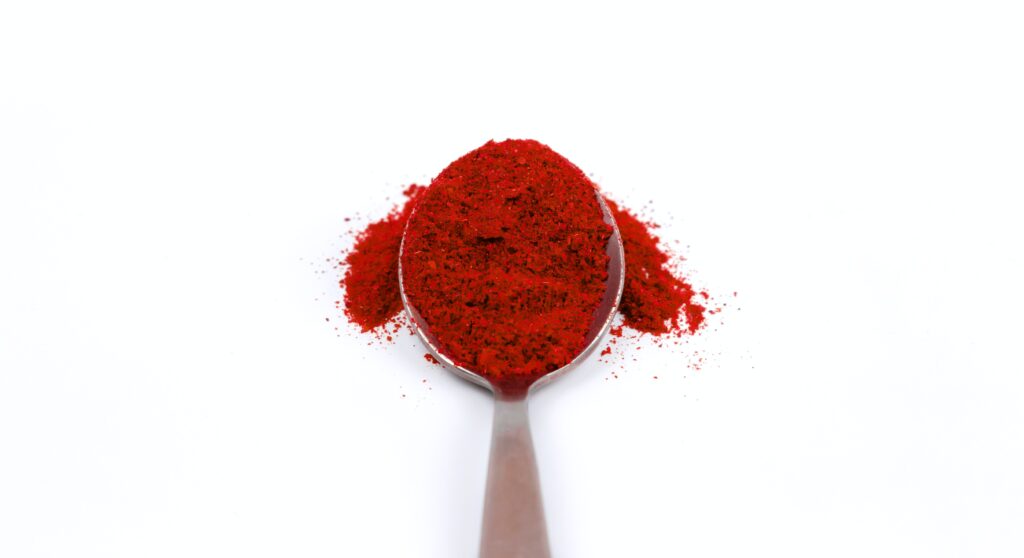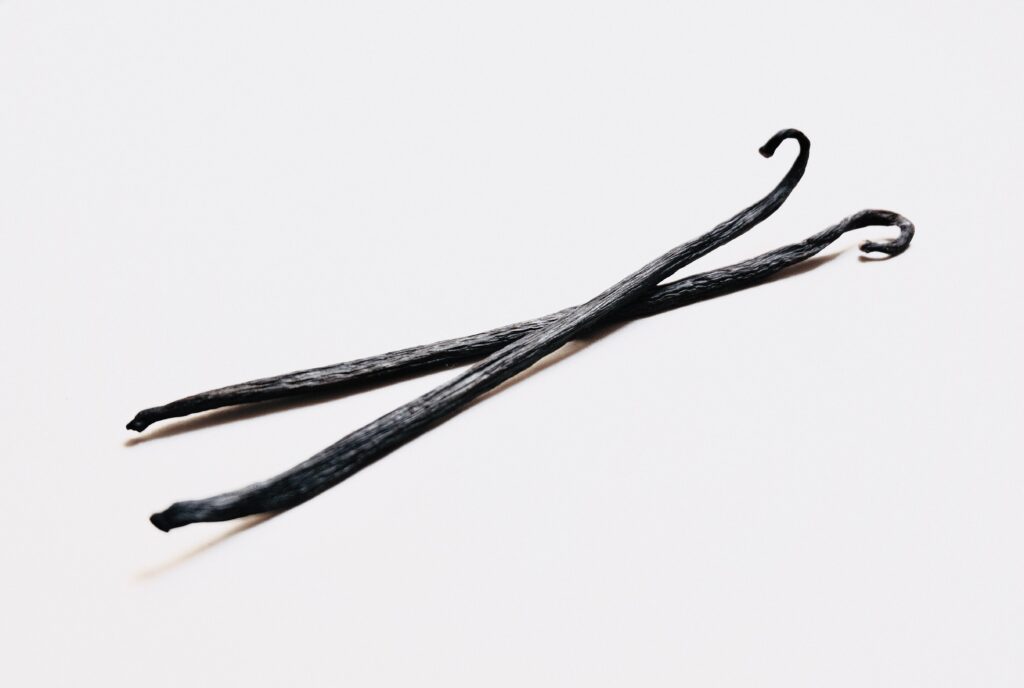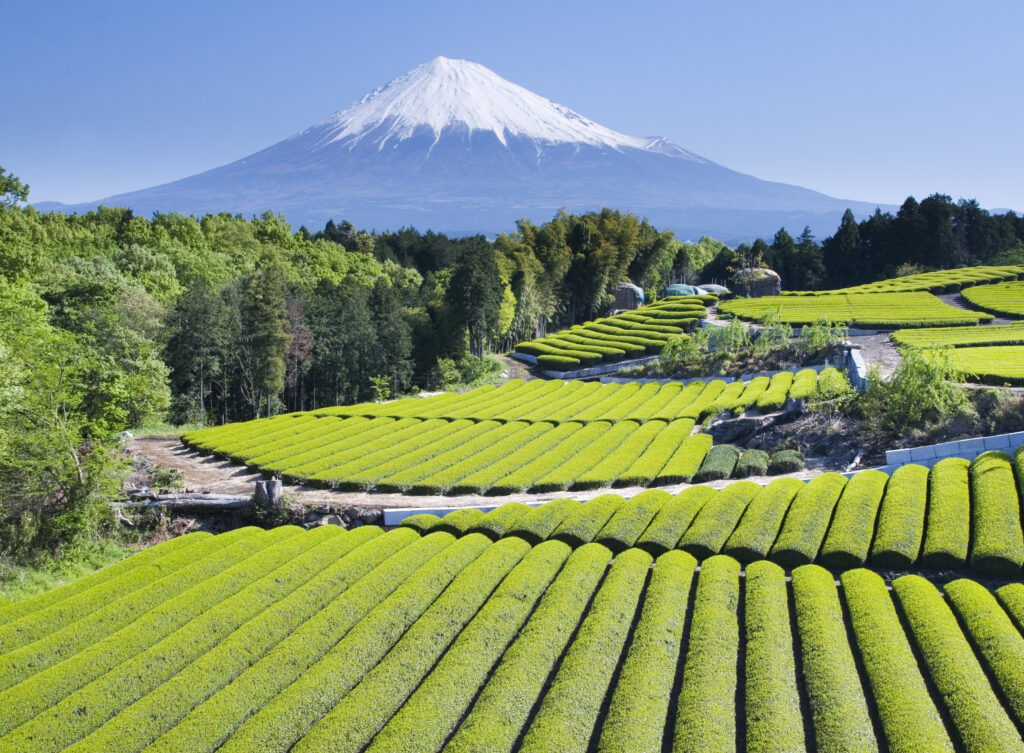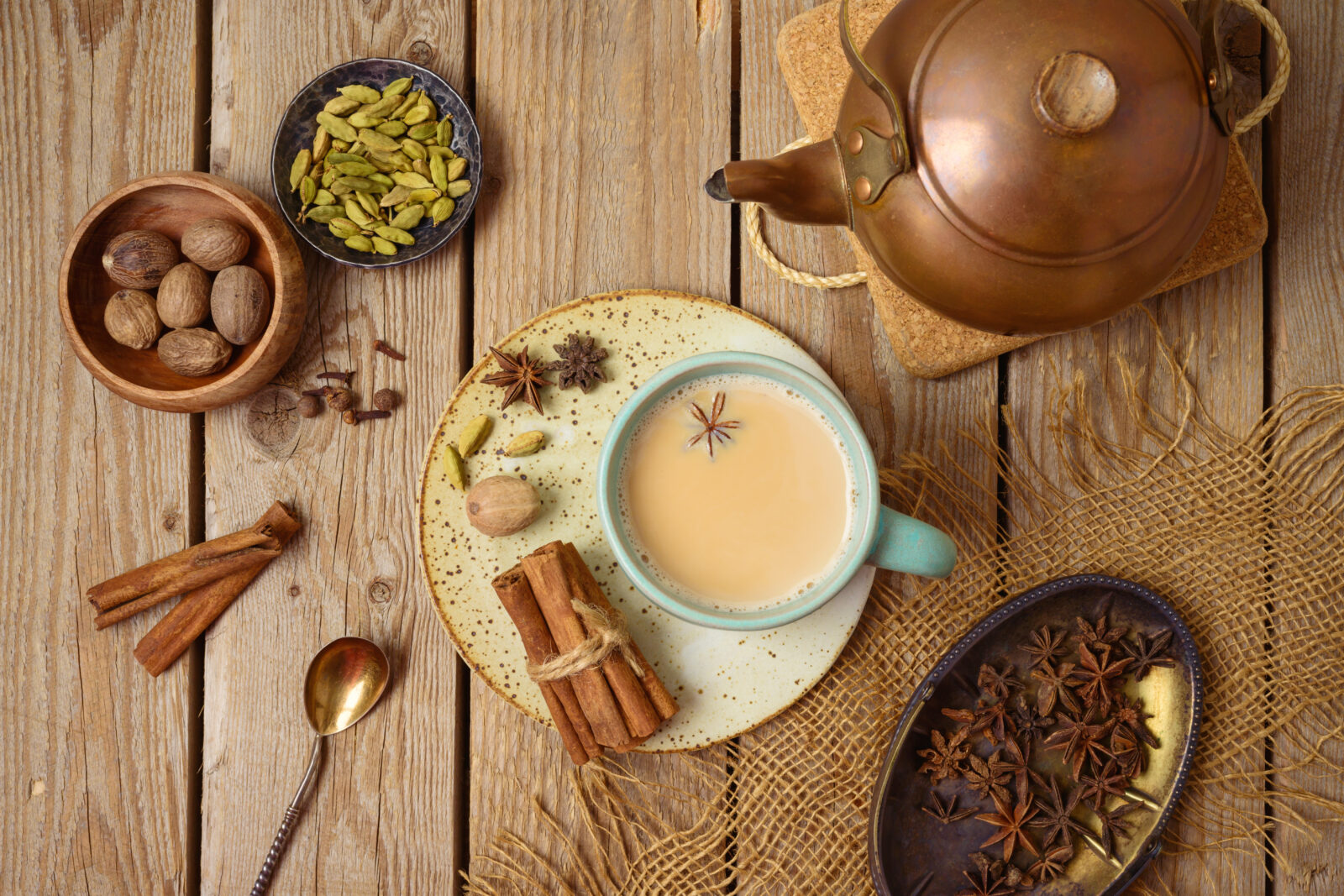Complement Holiday Flavors & Aromas With Chai
We love chai year-round, as do most people in India. It’s a wonderful tea, incandescent with flavor, refreshing and supremely satisfying. But our passion for chai expands during the holiday season. Many of the traditional chai spices also find their way into holiday baking. A mug of chai just seems natural when the plate on the table holds gingerbread cookies. Pro tip: Dip those gingerbread treats into a mug of hot chai before each bite. You’re welcome.
The word chai in Hindi means tea, just as in China the word for tea is cha. But in India, tea is generally much different from a simple cup of brewed leaves from the Camellia sinensis shrub. Chais celebrate spices, often things like ginger, clove, cinnamon, turmeric and cardamom. Chai teas normally are sweetened, too, and softened with milk. And of course they are rooted in black tea, the style of tea that is widespread across the subcontinent.
In addition to sipping, chai makes a wonderful culinary partner. The brewed tea can enliven baked goods — chai cupcakes, for example — and is versatile with savory dishes as well. A pork shoulder marinated in chai and smoked is a glorious thing.
We carry more than a dozen chais, and adore them all. Some are caffeine-free. Others lean more toward the spicy side. They can incorporate green tea, or offer spicy heat.
The following chai quintet covers a lot of bases. Try them all! One of the rewarding things about chai explorations is they capture an enormous range of flavors, depending on the spices used and the tea bases.
Chai Tea: Winter Chai

It’s a frigid night. A fire roars in the fireplace, and a blanket covers your lap. What should you be cradling in your hands? A mug of our Winter Chai, which is our spiciest. The key: cayenne pepper. This will keep you warm!
This robust blend combines assam black tea, cinnamon, ginger, rosemary, cardamom, red pepper, bay leaf, cayenne pepper and cacao. The cayenne fills it with heat, but the rest of the blend makes it special. We love the cacao — chocolate and pepper are New World treasures that we love when paired. The bay leaf offers a little bit of herbal bite; dried bay tastes a bit like oregano or marjoram. The rosemary ups the holiday quotient; where Thanksgiving revolves around sage, the December holidays pivot to warm rosemary for their herbal vibes. It’s one of our favorite herbs, and quite distinct. It’s not a variation on a theme of anise, like basil or tarragon. It tastes nothing like oregano, marjoram or thyme. Instead, rosemary is its own herbal animal, and finds its way into many holiday dishes, as well as this sublime tea.
Chai Tea: Autumn Chai

Winter Chai is our spiciest, and packed with ingredients. Autumn Chai, on the other hand, has sweeter notes, and is simpler: Madagascar vanilla black tea, cinnamon, allspice, ginger and nutmeg. The spices represent a quartet of classic holiday flavors; every sip will deliver you to the heart of the holidays.
We think one of the keys to this tea’s pleasures is the Madagascar vanilla black tea. The vanilla notes don’t overpower: they join hands with the baking spices and create something better.
It’s restorative on a cold morning, while watching the snow fall. Sip it during the afternoon for regular reminders of holiday pleasures. Dip a slice of Linzer torte or Russian Tea Cake cookie into this chai for transporting nibbles.
Chai Tea: Organic Rooibos Chai

Maybe you desire a cup of chai in the evening, but worry the caffeine from black tea will keep you awake. Or perhaps you seek new chai flavors, something anchored in novel ingredients. Then this is a chai to explore.
The South African shrub rooibos gives this chai earthy, herbal and even sweet flavors not commonly encountered in traditional chai. People across the southern African nation drink rooibos tea the way others sip Earl Grey, oolong and sencha: every day. Tea brewed from the leaves and stems is satisfying and healthy; among other things, rooibos is packed with electrolytes, essential minerals like potassium, sodium and calcium that perform important functions in the human body. Among other things, electrolytes assist hydration; when people sip rooibos, their hydration is improved more effectively than if they were just drinking water.
It’s healthy, but rooibos wouldn’t be immensely popular if it also didn’t taste great. Our Organic Rooibos Chai includes cinnamon, ginger, anise, black pepper, cardamom, cloves and bay leaf. In addition to the baking spices, this chai offers another common chai ingredient we have not yet discussed: black peppercorn. The fruit from the black pepper plant, which is a flowering vine native to India’s Malabar Coast, lends many chais a welcome wallop of that distinct, mildly tongue-tingling spice. It makes this rooibos chai even more complex and interesting.
Chai Tea: Green Chai

Where the Organic Rooibos Chai turns to South Africa for flavor inspiration, our Green Chai heads to Japan, where the green tea sencha rules. In Japan, 80% of tea grown and consumed is sencha, and it is the primary tea found in this chai. But we up the ante in this custom blend, rounding out the elixir with matcha, the powdered Japanese green tea that is the centerpiece of traditional Japanese tea ceremonies, and that also is found in lattes, cupcakes, stir fries and much more.
The sencha gives this chai a smooth grassy backbone, rather than the rich malty spine that comes with traditional black tea. Matcha also broadcasts grassy notes, but matcha also tastes sweeter and brighter than sencha. The combination in this tea makes perhaps the most Japanese chai imaginable.
As the dominant tea in this chai is sencha, the tea also contains less caffeine than many other options. Caffeine is more concentrated in matcha than all other styles of tea, but in this chai the matcha plays a minor role.
The spice blend — cinnamon, ginger, cardamom, clove and nutmeg — roots this chai in traditional chai flavors. We do appreciate the addition of nutmeg, which is also found in the Autumn Chai. It adds familiar but also mysterious flavors into the tea.
Chai Tea: Ku Cha Chai

The chai world tour continues. This time, we head to China. Instead of black teas from India, our Ku Cha Chai incorporates Keemun Monkey black tea, an excellent tea from China’s landlocked An Hui Province, in east-central China just one province away from coastal Jiangsu Province and its big city Shanghai.
When we decided to craft a namesake chai, we aimed to pursue a blend with outstanding balance. To that end, we combined cinnamon, ginger, cardamom, clove and nutmeg — a classic array of baking spices — with Keemun Monkey. We think it’s exceptionally balanced, combining the sweet, smooth characteristics of Keemun Monkey with five spices that have proved over centuries of use in baking, cooking and chai-crafting to complement one another perfectly.
Enjoy this one, like all of them in this guide, with something sweet, like honey, if you like. It welcomes milk, too. We find that dairy alternatives like coconut and oat milk tend to sing when combined with these spices, all of which come from tropical environments.
As the holiday season’s hold on us grows tighter in coming days, embrace it back with the beverage that best captures holiday flavors and aromas: chai.

